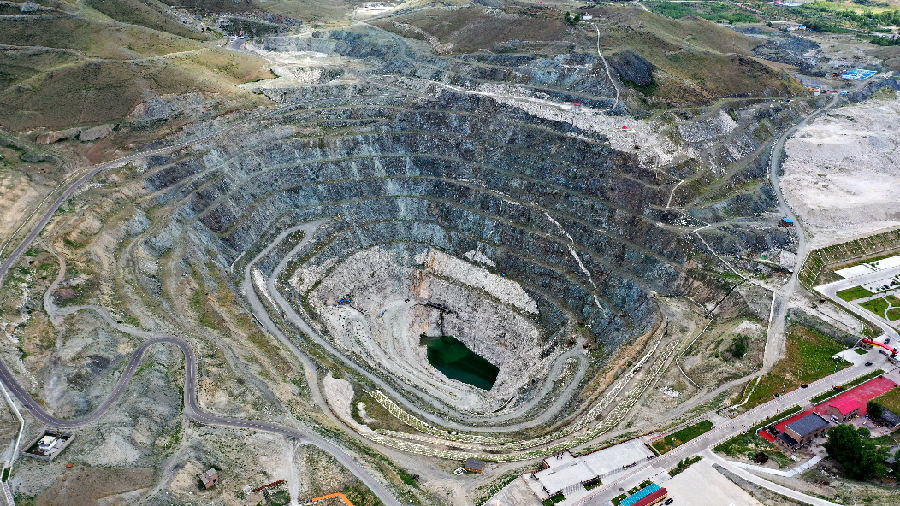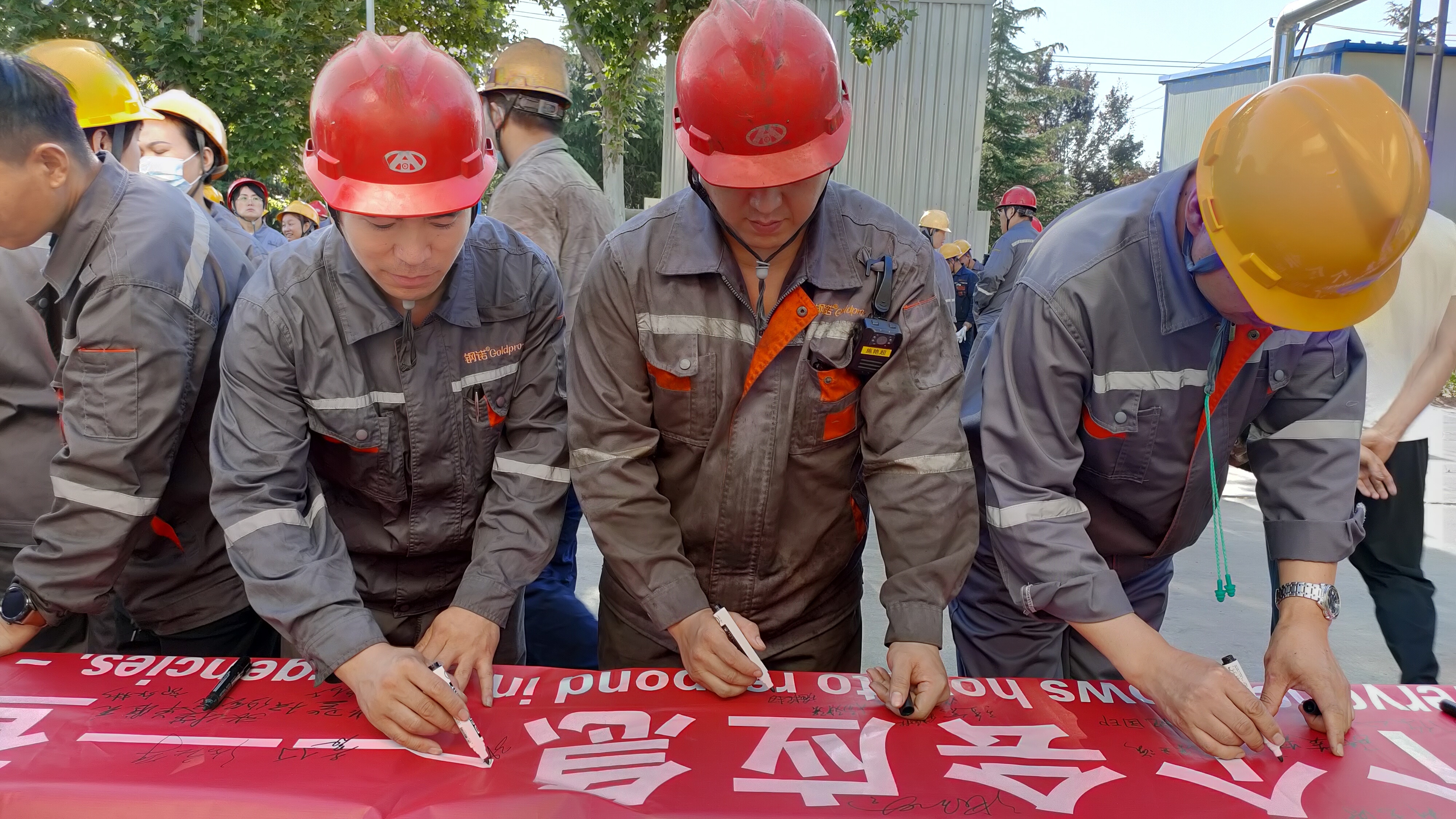Geological and mineral resource investigation and evaluation
Jun 05,2022
The level of basic geological survey work has been further improved, and significant breakthroughs have been made in the public interest survey and evaluation of oil and gas resources in areas such as shale gas and coalbed methane. Geothermal and groundwater resources surveys and evaluations were conducted in the Beijing-Tianjin-Hebei region. New progress has been made in the investigation of some important mineral resources.
The level of basic geological survey work has been further improved, and significant breakthroughs have been made in the public interest survey and evaluation of oil and gas resources in fields such as shale gas and coalbed methane. Geothermal and groundwater resources surveys and evaluations were conducted in the Beijing-Tianjin-Hebei region. New progress has been made in the investigation of some important mineral resources. Basic geological surveys and mineral resource surveys in the maritime areas, as well as deep-sea geological surveys, continued.
Basic Geological Survey
In 2020, central government funds completed 33,300 square kilometers of 1:50,000 regional geological surveys, with a cumulative area of 4,342,100 square kilometers, accounting for 45% of the country's land area. 16,100 square kilometers of 1:50,000 regional geochemical surveys were completed, with a cumulative area of 2,807,400 square kilometers, accounting for 29.1% of the country's land area. 95,600 line kilometers of aeromagnetic surveys and 475 kilometers of seismic reflection profile measurements were completed.
Mineral Resource Investigation and Evaluation
1. Oil and Gas Resource Investigation and Evaluation
New progress has been made in the investigation of continental shale oil and gas in the Songliao Basin. The Jili shale oil well No. 1 in the Lishu fault-depression in southern Songliao Basin obtained a high-yield industrial gas flow of 76,000 cubic meters per day for the first time in the Shahezi Formation shale layer, achieving a breakthrough in the investigation of continental shale gas in fault-depression basins; Songye oil well No. 3 in the Sanzhao sag in northern Songliao Basin obtained an industrial oil flow of 3.46 cubic meters per day, achieving a strategic investigation breakthrough in shale oil in a new area of low-pressure, low-to-medium thermal evolution mud shale reservoirs.
New progress has been made in the geological survey of shale gas in the lower reaches of the Yangtze River Economic Belt in Anhui Province, the middle reaches in central Hunan Province, and the upper reaches in Daguankou, Yunnan Province and Danzhai, Guizhou Province. The Xinsu No. 1 well in the northwestern margin of the Tarim Basin obtained industrial gas flows of 16,800 cubic meters per day and 12,600 cubic meters per day from two fractured Silurian layers, opening up a new exploration layer for oil and gas in the northwestern Tarim Basin.
Significant breakthroughs in industrial gas flow were achieved in the Heiji No. 4, Heiji No. 3, and Heiji No. 1 wells deployed in the goaf and surrounding deep layers of the coal mining area in the Jixi Basin, effectively serving the efficient governance of mine gas and the comprehensive utilization of coalbed methane resources, and opening up a new field for the exploration and development of unconventional oil and gas resources mainly composed of coal-derived gas.
2. Geothermal Resource Investigation and Evaluation
China's first large-scale hot dry rock reservoir construction was successfully achieved. The first hot dry rock high-temperature hard rock directional well completion project in China was completed. A geothermal well with the largest depth and highest water temperature in the Beijing-Tianjin-Hebei region was discovered at a depth of 4,500 meters in Xiong'an New Area.
3. Groundwater Resource Investigation, Evaluation, and Monitoring
The 2020 annual data survey and evaluation of national and provincial groundwater resources, quality, and storage resource annual changes were completed.
Integrated investigation and evaluation of water resources were explored in the Beijing-Tianjin-Hebei region, clarifying the quantity, quality, and change characteristics of water resources, and forming a comprehensive water resource evaluation method.
63,500 groundwater level surveys were conducted. The trends of groundwater level changes, the current situation and causes of groundwater drawdown funnels in key areas such as the North China and Northeast Plain, the Yellow River and Huaihe River basins, and the inland basins in Northwest China were analyzed.
4. Other Mineral Geological Investigation and Evaluation
In 2020, 18,500 square kilometers of 1:50,000 mineral geological surveys were completed, and more than 100 prospecting target areas were delineated. One large spodumene deposit was newly discovered in the Malkang Jiada mining area in western Sichuan, and three new types of sedimentary rare earth deposits were newly discovered in the Weining area of Guizhou Province. A rare earth mineralized belt was newly discovered in the continental trough mining area of Dechang, Sichuan Province. The cumulative thickness of copper-molybdenum ore (mineralized) bodies drilled in a single well in the Zhuono integrated exploration area in Tibet exceeded 400 meters. A number of important prospecting advances were made in rare metals and fluorite in the western section of the Altyn Tagh Mountains, the Huichang tin mine in Jiangxi Province, the Gaopi molybdenum mine in Yidu, Jiangxi Province, and the manganese mine in the Dawang area of Tongren, Guizhou Province.
In 2020, a total of 35 types of non-oil and gas solid mineral resource potential evaluations were completed, with niobium, tantalum, and germanium being the latest completed.
Marine Geological Survey
1. Marine Basic Geological Survey
Continued conducting 1:250,000 and 1:50,000 marine regional geological surveys in China's jurisdiction. Implemented 1:250,000 marine regional geological and aerogeophysical surveys in three key sea areas: the East China Sea's Hu Pi Jiao, the nearshore area of Hainan Island, and the Xisha Islands.
1:50,000 marine regional geological surveys were conducted in key sea areas, and a large-scale marine geological survey technical system was initially established. For the first time, a super-deep-water land-based geomagnetic exploration profile survey across the Southwest Sub-basin of the South China Sea was successfully completed, and a geoscience cross-section map of the crust-mantle scale across the Southwest Sub-basin of the South China Sea was compiled.
2. Marine Mineral Resource Survey
Silurian-Carboniferous paleo-oil reservoirs were discovered for the first time in the waters of the southern Yellow Sea, six favorable oil and gas zones were selected, 18 key structures were delineated, four drilling targets were submitted, and seven well locations were recommended. The well location for the Mesozoic oil and gas parameter well in the northeastern South China Sea was determined, and 2-3 favorable oil and gas drilling targets were selected in the northern South China Sea.
A survey of sea sand resources in the Fujian-Taiwan shallows was conducted, and the estimated amount of sea sand resources was approximately 69 million cubic meters. A survey of sea sand resources in the Dongfang-Ledong sea area of Hainan Province was completed, predicting a prospective resource amount of approximately 2.4 billion cubic meters and a controlled resource amount of 92.5 million cubic meters.
3. Deep-Sea Geological Survey
The second round of Sino-Pakistani joint geological survey voyage was implemented, and systematic marine geological surveys were conducted in Pakistan's exclusive economic zone, creating a model for geoscience cooperation on the "21st Century Maritime Silk Road." Deep-sea geological resource and environmental survey voyages were organized and implemented, and multi-channel seismic detection was carried out in the southern waters of the Bay of Bengal in the northeastern Indian Ocean. Proposals for deep-sea drilling in the Bay of Bengal were put forward. The 10th deep-sea geological survey voyage and the 64th Chinese oceanic scientific expedition were successfully completed, making important achievements in the new discovery of cobalt-rich polymetallic nodule resources in the western Pacific Ocean, the fulfillment of contracts for cobalt-rich crusts, deep-sea biological surveys, and deep-sea exploration technologies.








